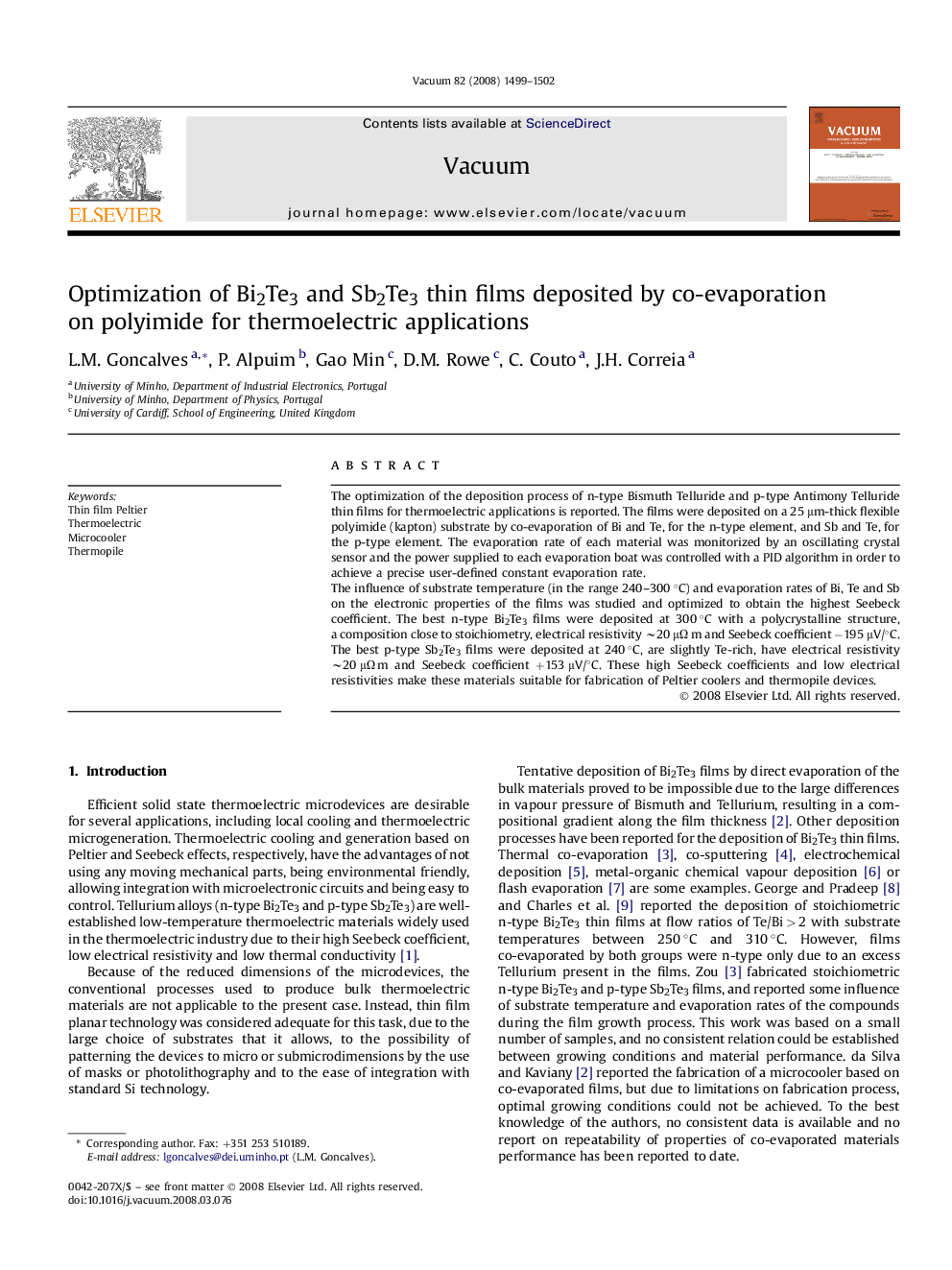| Article ID | Journal | Published Year | Pages | File Type |
|---|---|---|---|---|
| 1691664 | Vacuum | 2008 | 4 Pages |
The optimization of the deposition process of n-type Bismuth Telluride and p-type Antimony Telluride thin films for thermoelectric applications is reported. The films were deposited on a 25 μm-thick flexible polyimide (kapton) substrate by co-evaporation of Bi and Te, for the n-type element, and Sb and Te, for the p-type element. The evaporation rate of each material was monitorized by an oscillating crystal sensor and the power supplied to each evaporation boat was controlled with a PID algorithm in order to achieve a precise user-defined constant evaporation rate.The influence of substrate temperature (in the range 240–300 °C) and evaporation rates of Bi, Te and Sb on the electronic properties of the films was studied and optimized to obtain the highest Seebeck coefficient. The best n-type Bi2Te3 films were deposited at 300 °C with a polycrystalline structure, a composition close to stoichiometry, electrical resistivity ∼20 μΩ m and Seebeck coefficient −195 μV/°C. The best p-type Sb2Te3 films were deposited at 240 °C, are slightly Te-rich, have electrical resistivity ∼20 μΩ m and Seebeck coefficient +153 μV/°C. These high Seebeck coefficients and low electrical resistivities make these materials suitable for fabrication of Peltier coolers and thermopile devices.
